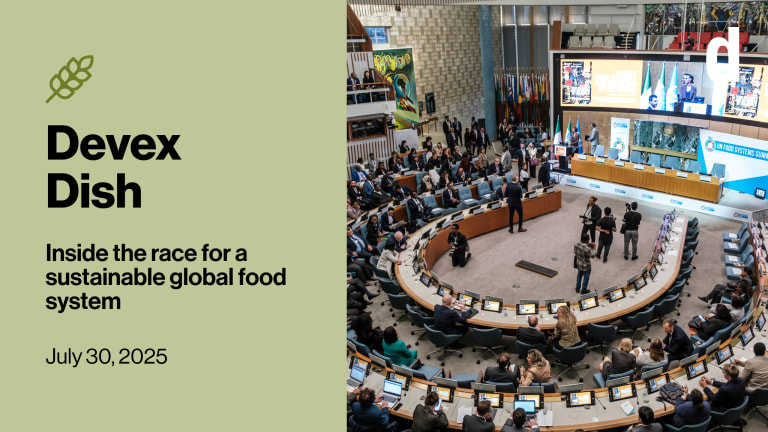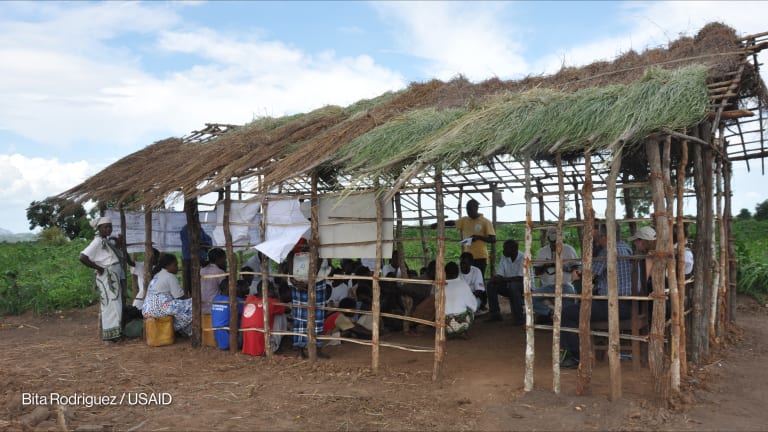
There have been critical discussions taking place concerning strategies and approaches to adequately meet the food security needs of an increasingly populous world. With a global population of an estimated 9 billion by 2050, varying proposals have been put forth to address the stresses of growing demand on food systems. Debates have ensued around the utilization of innovation and technology, how to minimize food waste and how to balance livestock production with cereal production and horticulture, among others. The more these conversations progress, the more it becomes apparent that, at least on the global level, the answer to “which option: A or B?” is “yes.”
See more #FeedingDev articles:
• Investing in evidence to end hunger
• How nutrition data can help predict food insecurity risk
• Nutrition can be delivered through cash-crop standards systems — here are five ways how
But we know that there is no broad-brush technique to addressing food insecurity in all the unique contexts encountered on the ground. There is certainly value in the wider discussion of how we will meet growing global demand; but linking this very general discussion to the practical development policies and projects that will build livelihoods and community resiliency remains a struggle.
However, the mechanisms to link the macro to the micro in the complex food security arena do exist. They are found throughout the vibrant local civil societies around the world. And while utilization of civil society organizations in individual projects provides added value to communities, the support of broader CSO networks can truly link individuals to the global food security conversation.
Linking the local to the global
In 2003, the three U.N. food and agriculture agencies — the Food and Agricultural Organization, World Food Program and the International Fund for Agricultural Development — plus Bioversity International, founded the Alliance Against Hunger and Malnutrition. This global network, housed at the FAO in Rome, provides a platform to bring together national and regional coalitions of stakeholders in food security issues. Overall, there are “national alliances” in approximately 60 countries worldwide, along with eight multi-country “regional alliances.” My own organization, the Alliance to End Hunger, serves as the U.S. arm of the AAHM. The organizations in these alliances range in size, makeup and function, and can include farmers’ groups, cooperatives, women’s groups, nongovernmental organizations, faith-based groups and educational institutions. All of the organizations in these alliances share a common desire to eradicate hunger and malnutrition in their countries, while simultaneously serving as representatives of their respective constituencies.
The national alliance model has proven to be a valuable asset to civil society in the development and implementation of food security and agricultural policy. In 2011, IFAD supported the Alliance to End Hunger in an initiative to partner our own U.S. National Alliance with those in developing countries. The National Alliance Partnership Program met with incredible success in Ghana. With the initiative’s help, the Hunger Alliance of Ghana — the Ghanaian arm of the AAHM — held multiple consultative meetings around the country with USAID and Comprehensive Africa Agriculture Development Program officials, which raised the voice of civil society in the CAADP and Feed the Future processes. A CAADP non-state actor task force was established as a direct result of the consultations, with the Hunger Alliance of Ghana serving as secretariat.
Finally, the civil society coalition also worked as a catalyst through which a Hunger Caucus in the Parliament of Ghana was set up, providing a mechanism through which food security concerns could be voiced to the Ghanaian government.
Much needed attention
The progress civil society in Ghana is making is exactly what food security policy processes need worldwide. While bringing CSOs into development on a case-by-case basis is certainly beneficial to development strategies and wider beneficiary communities, the support of larger CSO networks can help raise the profile of civil society in the development and food security processes themselves.
Such support is starting to gain more promising ground. In addition to the inroads that various civil society bodies are making into the CAADP process, the Scaling Up Nutrition Civil Society Network was established in 2013 to support multi-stakeholder platforms dedicated to establishing and strengthening national nutrition efforts.
In May of 2014, following a series of conversations between U.S. civil society leaders and representatives of U.S. government agencies coordinating Feed the Future activities, a Feed the Future Civil Society Action Plan was established. The CSAP lays the ground for increased civil society engagement in Feed the Future activities. Among other recommendations, the CSAP calls for the strengthening of local alliances seeking to raise their voices through advocacy and policy analysis in food security and agricultural policy processes — citing the work of the Alliance to End Hunger specifically. USAID has also granted additional funding for continuation and expansion of the National Alliance Partnership Program.
While progress is promising, civil society networks deserve additional support and increased roles in food security and agricultural development. Granting such networks not only a seat at the table, but also a leadership role, will more intimately link grand discussions of feeding the world to the efforts being made at the community — and even household — level.
Want to learn more? Check out Feeding Development's campaign site and tweet us using #FeedingDev.
Feeding Development is an online conversation hosted by Devex in partnership with ACDI/VOCA, Chemonics, Fintrac, GAIN, Nestlé and Tetra Tech to reimagine solutions for a food-secure future from seed and soil to a healthy meal.








